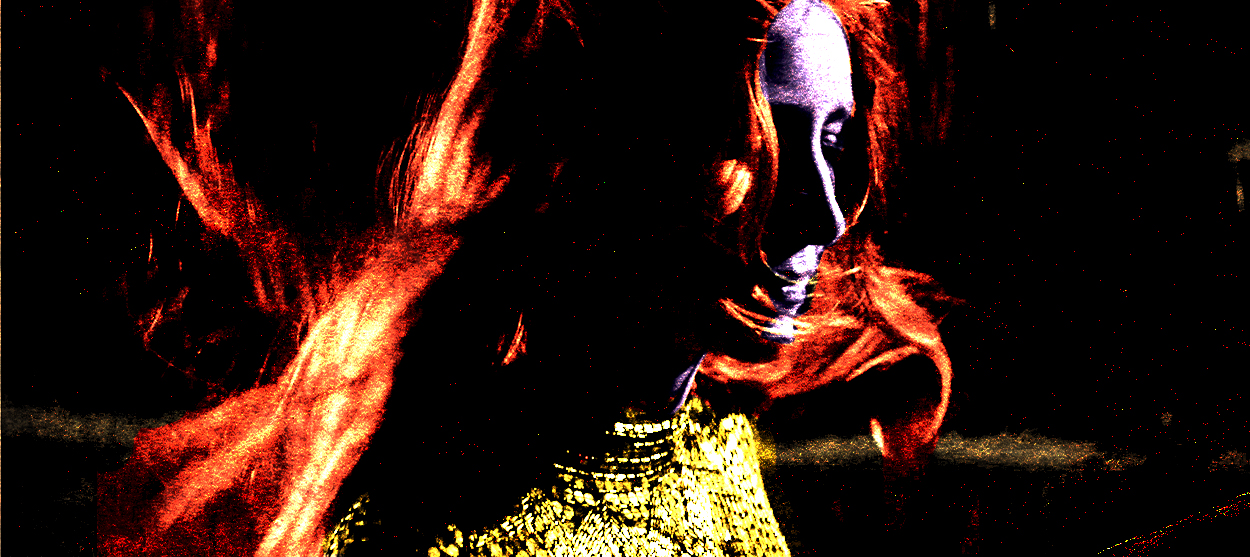In defense of Suburbicon
George Clooney's new movie is better than you've heard. Here's why.

George Clooney's Suburbicon is many things: a mustard-and-avocado-green period piece, a Hitchcockian thriller, a political parable, a tragedy, a farce, and a knockoff of Fargo by the writers of Fargo (part of the film is based on an old Coen brothers script). It is, in a word, discordant. In this reviewer's opinion, intriguingly so.
The film, which Clooney directed, revolves around two dramas unfolding in "Suburbicon," a planned community dedicated to the American Dream as typified by shiny ladies and merry mailmen. One is that a black family, the Mayers, has moved in. The other is that Gardner Lodge (Matt Damon) is a little bored with his particular version of the Dream. His son (Noah Jupe) is sullen, his wife (Julianne Moore) is wheelchair-bound, and her sister (also Julianne Moore) is awfully sympathetic. If that sounds like a hard set of premises to reconcile, it is: Clooney wanted to make the first film and ended up combining it with the second (a 1986 Coen brothers script). But the result, while certainly mixed, is getting panned beyond its deserts. In this particular political moment, Suburbicon's off-putting mashup feels not just timely but urgent.
That said, its contradictions run deep: This is largely a white movie about a white family's dysfunction while living in a mostly-white neighborhood. That the neighborhood in question is a treacly planned community with slick marketing, banal pleasantries, and no tolerance for minorities isn't exactly incidental: The community's siege against the Mayers indexes the crazed mania for control that underwrites the suburbs' clean-cut fantasies. The trouble is that the Mayers — and this is based on real events — do little but show grace under fire. They never quite resolve into characters, nor is their perspective centered. They remain almost as allegorical and fantastic as the pretend families smiling from Suburbicon's promotional pages. They are that fantasy — only darker-skinned, and therefore terrorized, screamed at, walled off, fenced out.
The Week
Escape your echo chamber. Get the facts behind the news, plus analysis from multiple perspectives.

Sign up for The Week's Free Newsletters
From our morning news briefing to a weekly Good News Newsletter, get the best of The Week delivered directly to your inbox.
From our morning news briefing to a weekly Good News Newsletter, get the best of The Week delivered directly to your inbox.
It's hard to square this subplot — and it is no more than a subplot — with the film's farcical noir throughline, which follows Nicky Lodge (Noah Jupe), the Mayers' young neighbor, as he realizes that his father (Matt Damon) and aunt (Julianne Moore) are not what they seem. The film develops into a thriller as tense as it is ludicrous, with Oscar Isaac — who plays an insurance agent — stealing both scenes in which he appears.
The film's critics contend that Suburbicon shows its seams too clearly; this is too obviously a pair of scripts that have been spliced together. There's something unsavory about relegating the true story of the real Mayers' plight in Levittown, Pennsylvania, to a kind of tone poem that merely accompanies the story of yet another white family's dysfunction. I see that argument. I agree that the Mayers deserve a film in which they are the center. But ultimately, I disagree.
The implication is that it would have been better to let the comedy be the comedy and the tragedy be the tragedy — to let the Mayers' story live in its own film and the Coens' script zip off into their trademark charming lunacy. This is understandable; it's certainly how we've always understood genre to work in film. But it's wrong.
These are not separable affects or genres, especially not now. We're living in a moment characterized by white rage provoked by the slight diminution of white pleasure. White pleasantries aren't separable from the anger that explodes when conditions that privilege them are disrupted (cf. the war on Christmas), and that must be acknowledged. The Coen brothers are known for making good, charming, and successful movies — movies laced with nostalgia and enamored of small-town Americana. That charm depends on suppressing the ways in which those versions of America affected others, especially non-whites. Suburbicon doesn't suppress that; it doesn't permit the erasure of Americana's unsavory side. That said, neither does it center a story that's arguably more compelling.
A free daily email with the biggest news stories of the day – and the best features from TheWeek.com
Yes, Suburbicon is discordant. Certainly, it seduces you into wanting to know more about the Lodge family as their story gets weirder and bloodier. But rather than let you disappear into the prurient curiosity we bring to those kinds of stories — the "lone wolf" narrative that saves white crime from being read as structural — it keeps cutting back to the everyday horror the Mayers are experiencing. Watching Karimah Westbrook calmly hang laundry on her clothesline as white men and women scream at her is truly horrifying. And the implied parallel between her son Andy — a wonderful Tony Espinosa — and Nicky Lodge is notable for how spectacularly it fails. Nicky's experience, however traumatic it was, will be validated. It will be reported in the papers and rendered exceptional (it will even be made into a film!). Andy's will go unrecognized. Nice white ladies will appear on TV and talk about how the treatment he's receiving is appropriate and right.
Clooney's film is sharper than the Coen style from which it borrows. Its juxtapositions are jagged, its aim seems slightly fractured, its priorities mixed, maybe even misplaced. But it captures — to an extent few films have — the bizarre aesthetics of this political moment. Its confusions are timely.
Suburbicon might be the most contemporary period piece I've ever seen.
Lili Loofbourow is the culture critic at TheWeek.com. She's also a special correspondent for the Los Angeles Review of Books and an editor for Beyond Criticism, a Bloomsbury Academic series dedicated to formally experimental criticism. Her writing has appeared in a variety of venues including The Guardian, Salon, The New York Times Magazine, The New Republic, and Slate.
-
 The rise of runcations
The rise of runcationsThe Week Recommends Lace up your running shoes and hit the trails on your next holiday
-
 Amorim follows Maresca out of Premier League after ‘awful’ season
Amorim follows Maresca out of Premier League after ‘awful’ seasonIn the Spotlight Manchester United head coach sacked after dismal results and outburst against leadership, echoing comments by Chelsea boss when he quit last week
-
 January’s books feature a revisioned classic, a homeschooler's memoir and a provocative thriller dramedy
January’s books feature a revisioned classic, a homeschooler's memoir and a provocative thriller dramedyThe Week Recommends This month’s new releases include ‘Call Me Ishmaelle’ by Xiaolu Guo, ‘Homeschooled: A Memoir’ by Stefan Merrill Block, ‘Anatomy of an Alibi’ by Ashley Elston and ‘Half His Age’ by Jennette McCurdy
-
 Walter Isaacson's 'Elon Musk' can 'scarcely contain its subject'
Walter Isaacson's 'Elon Musk' can 'scarcely contain its subject'The latest biography on the elusive tech mogul is causing a stir among critics
-
 Welcome to the new TheWeek.com!
Welcome to the new TheWeek.com!The Explainer Please allow us to reintroduce ourselves
-
 The Oscars finale was a heartless disaster
The Oscars finale was a heartless disasterThe Explainer A calculated attempt at emotional manipulation goes very wrong
-
 Most awkward awards show ever?
Most awkward awards show ever?The Explainer The best, worst, and most shocking moments from a chaotic Golden Globes
-
 The possible silver lining to the Warner Bros. deal
The possible silver lining to the Warner Bros. dealThe Explainer Could what's terrible for theaters be good for creators?
-
 Jeffrey Wright is the new 'narrator voice'
Jeffrey Wright is the new 'narrator voice'The Explainer Move over, Sam Elliott and Morgan Freeman
-
 This week's literary events are the biggest award shows of 2020
This week's literary events are the biggest award shows of 2020feature So long, Oscar. Hello, Booker.
-
 What She Dies Tomorrow can teach us about our unshakable obsession with mortality
What She Dies Tomorrow can teach us about our unshakable obsession with mortalityThe Explainer This film isn't about the pandemic. But it can help viewers confront their fears about death.
